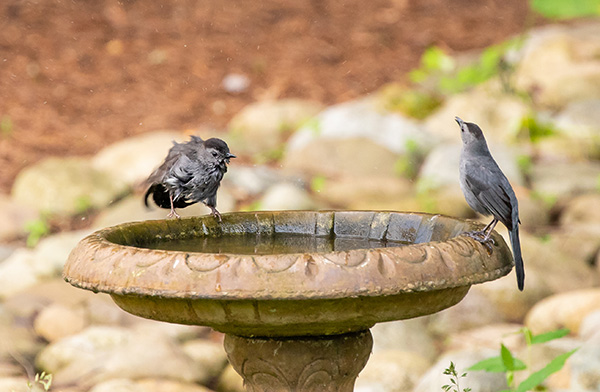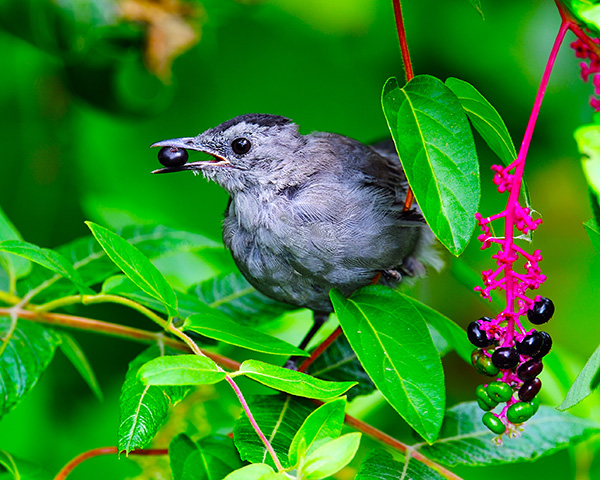Gray Catbirds are a common songbird throughout much of the U.S. and are known for their unique call. Their population is also growing in certain parts of the country, so chances of seeing these birds in the wild are increasing for active birders and backyard feeder watchers alike. In case you do cross paths, here’s some information to help you get to know the Gray Catbird.
How to identify Gray Catbirds
Both male and female Gray Catbirds are almost entirely gray, and it can be very difficult to tell the genders apart by sight alone. Gray Catbirds also have a small black cap on their head, a darker, sometimes black tail and a patch of brownish-red underneath their tail. Juveniles tend to have even less variation in their plumage than adults and appear almost completely gray.
Given their rather plain markings, Gray Catbirds are often easiest to spot by listening for their distinctive call. Many people think their call sounds like a cat “mewing” or crying out, which is where the birds get their name. They are also enthusiastic singers and their songs have been known to last upwards of 10 minutes.
Where do Gray Catbirds live?
The Gray Catbird’s natural habitat covers the majority of the continental U.S., essentially including everywhere except California and parts of the southwest. They will often migrate to the southern U.S. or the tropics, but some have been known to spend the winter in more northern areas.
Gray Catbirds tend to spend most of their time in thick shrubs and other dense undergrowth where they actively move about from branch to branch. They can occasionally be seen out in the open jerking their tail enthusiastically.
What do Gray Catbirds eat?
Gray Catbirds are known as ground foragers that eat mostly insects and can often be found looking for food under fallen leaves. They also have a strong appetite for berries and will eat directly from bushes or trees.
Gray Catbirds will eat from backyard feeders, especially ones that contain fruit. They have also been seen at feeders eating a wide range of human foods, including things like cheese, cooked vegetables, doughnuts and cereal.
Five fun facts about Gray Catbirds
- Gray Catbirds are related to mockingbirds, which may explain why they will often imitate the songs of other birds as well as cars, frogs or other sounds from their surroundings.
- They migrate primarily at night and those that come from the northwest part of the country will often fly east before turning south for the winter.
- Gray Catbird eggs hatch in roughly 12-13 days and the young often leave the nest only about 10-11 days after that.
- When perched, Gray Catbirds will often point their tails toward the ground, giving them a humpback-like appearance.
- The oldest Gray Catbird on record was at least 17 years, 11 months old.
If you’d like to attract Gray Catbirds to your home bird feeder, consider a bird seed mix that contains fruit like Lyric Fruit and Nut High Energy Mix or the popular Lyric Fine Tunes No Waste Mix.


